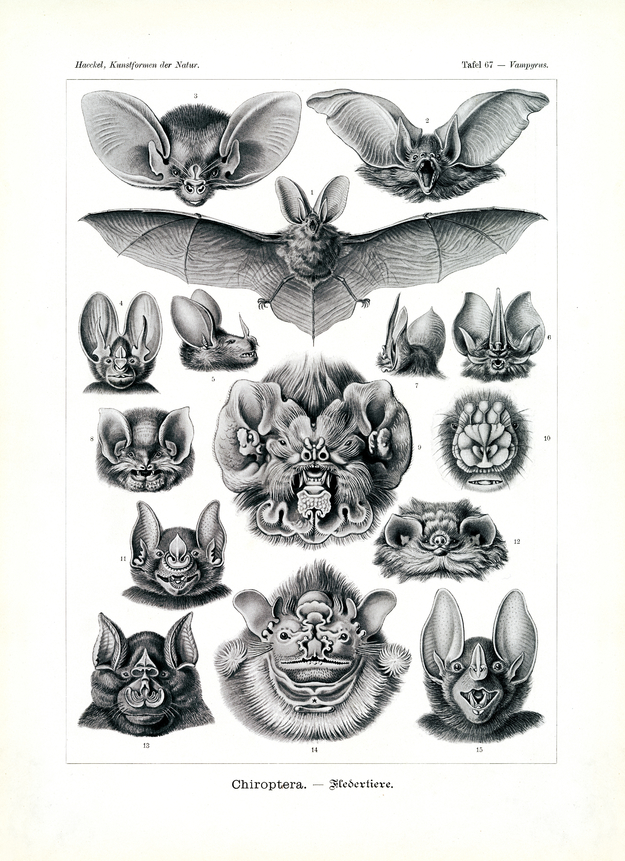Translation of the original German introduction by Ernst Haeckel:
Phylum of Vertebrata (Wirbeltiere); - main class of Gnathostoma (Kiefermäuler); - class of Mammalia (Säugetiere); - subclass of Platcentalia (Zottentiere); - order of Chiroptera (Fledertiere).
The flying mammals, commonly known as “bats“, better named as ‘flutter-animals’ or ‘hand-winged animals’ are distinguished from all other mammals first of all by their most peculiar ‘flying apparatus’, the thin, broad cutaneous fold, “flying membrane” (Patagium), stretched in between the very much elongated fingers of the hand and the sides of the body as well as the weak hint legs and the tail. Secondly, these ‘flutter animals’ are characterized by the peculiar appearance of their face, attributed to the small eyes and the unusual shape and size of ears and nose. Multiply shaped lappets and appendages fixed to these highly developed sense organs are the base of a most delicate sensory perception substituting the weak vision of these animals that fly in the dark of night and dusk.
All Chiroptera illustrated on this plate belong to the suborder of insectivorous ‘flutter animals’ (Nycterina); more than 400 species are distinguished. They again break up into two groups, the ‘smooth-nosed’ and the ‘leaf-nosed’. The ‘smooth-nosed’ (Gymnorhina, fig. 1-3, 8, 12) have a small nose without leaf-cap and in most cases very big ears with peculiarly shaped inner ear-lopes (Tragus). The ‘leaf-nosed’ (Phyllorhina) are distinguished by the possession of a weird, mostly huge and bizarrely shaped leaf-cap on the nose (fig. 4-7, 9-11, 13-15). When fully developed it consists of three leaf-shaped parts, an anterior ‘horseshoe-leaf’, an intermediate ‘saddle-leaf’ and a posterior, usually vertically elevating ‘lance-leaf’.
Translation by VR Translators Bangalore
We've scanned the original lithography at 1200dpi on the Epson A3 scanner of A3 scanner huren. You can download a 400dpi JPEG here.
